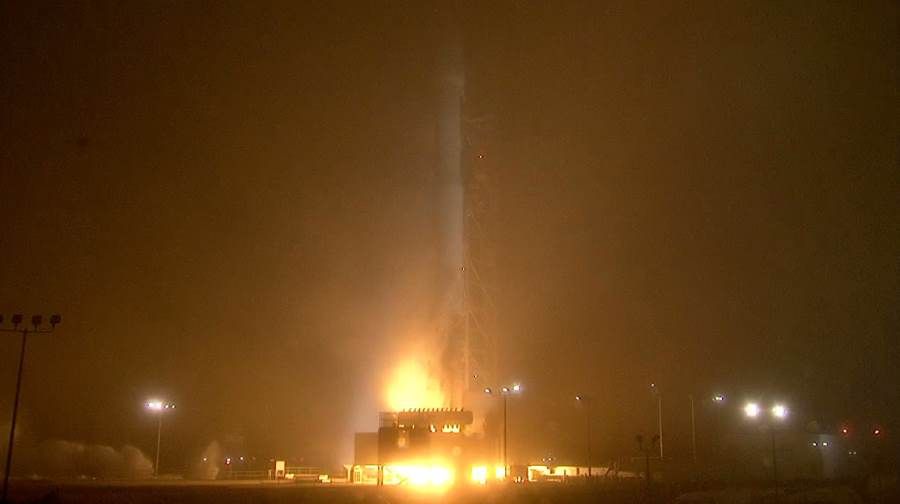Mission to the interior of Mars. The InSight probe already on its way to the Red Planet
As planned, at 1:05 p.m. Polish time, NASA’s InSight mission was launched, which will probe the interior of the Red Planet. This is the first-ever mission dedicated to exploring the deep interior of Mars. On board the probe was an instrument designed and made by Polish engineers.
The InSight probe was launched atop an Atlas V rocket. The mission is part of NASA’s Discovery program, which has been running since 1992. If everything pogoes according to plan, InSight will reach its destination in kr timeot less than seven months, touching the surface of Mars on Nov. 26.
The landing is expected to take place in roThe volcanic wnina near the roThe interior of the Red Planet at a site called Elisium Planitia. It is about 600 kilometersoin from the current position of the Curiosity rover. The site was chosen because of its reflectionor possibly unclutteredocon seismic waves.
– The InSight lander will probe the interior of another rocky planet besides Earth, giving us an idea of the size of Mars’ core, mantle and crust. We will be able to cfoCompare this data with similar ones done on Earth – Said during Thursday’s press conference Jim Green of NASA. – It is crucial for us to understand the origin of our solar system – he added.
Together with the spacecraft and lander, two CubeSat standard minisatellites flew on their way to Mars. MarCO-A and MarCO-B will be tasked with reporting on the Mars landing.
The goal of the InSight mission is to conduct geophysical surveys on Mars, ktore will provide groundbreaking information about the internal structure of the planet and its coohe modern geological activity. The mission will provide a better understanding of the evolution and formation of Mars, and in ogole of Earth-type planets.
The lander is powered by solar energy. It weighs 358 kilogramsow. It will use parachutes, braking engines and impact-absorbing legs for landing. It will deploy two scientific instruments on site using a robotic arm – seismometer and made by Astronika and the Space Research Center of the Polish Academy of Sciences probnik heat. The mission is expected to last two Earth years.
InSight will monitor the planet’s pulse by detecting vibrations caused by the "earthquakes", meteorite impactsoin and other such events. It will use the ultra-precise SEIS (Seismic Experiment for Interior Structure) seismometer for this purpose.
LIFTOFF! Humanity’s next mission to Mars has left the pad! @NASAInSight heads into space for a
6 month journey to Mars where it will take the planet’s vital signs and help us understand how rocky planets formed. Watch: https://t.co/SA1B0Dglms pic.twitter.com/wBqFc47L5p
— NASA (@NASA) May 5, 2018
Second headoAnother scientific instrument is HP3 (Heat Flow and Physical Properties Package) – probnik to measure heat flux from the planet’s interior, whichory will be launched to a depth of 5 metersointo the Martian soil. The contractor of the mechanism driving the „HP3 Mole” is the Polish company Astronika, ktorej engineers have made the Polish space industry known at NASA for producing the world’s best penetrating devices for space missions.
Astronika as coordinator of the production process „Crete HP3” has engaged several Polish centers to subcontract theow scientific, m.In. Space Research Center of the Polish Academy of Sciences, the Institute of Aviation, the Institute of Welding, the Technical University of Łodzka and Warsaw University of Technology.
The HP3 Mole is a complete device entirely made in Poland, which is a breakthrough for the Polish space sector, because for the first time ever a Polish company and its subcontractors are supplying a complete subsystem rather than individual components or processes.
The task of this device will be to study the history of the formation of Mars, study the changes that are taking place in the structure of the planet, the temperature, study the nucleus of the planet. Never before has any device penetrated the surface of Mars to such depths.
Third heados scientific instrument is the RISE (Rotation and Interior Structure Experiment) – an instrument used to measure the Doppler shift of the signalow Between InSight and Earth. It will allow the detection of minute variations in Mars’ axis of rotation, which should give some idea of the planet’s core, including its size.

